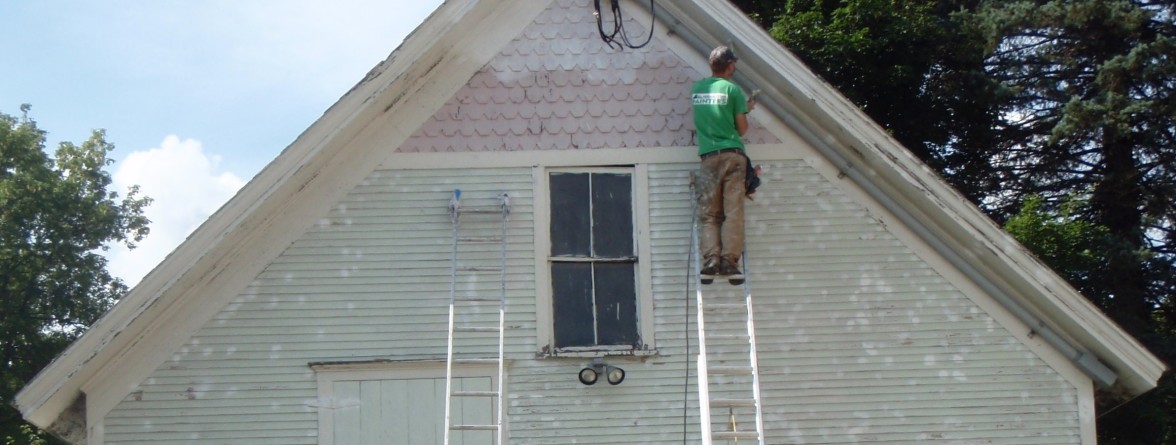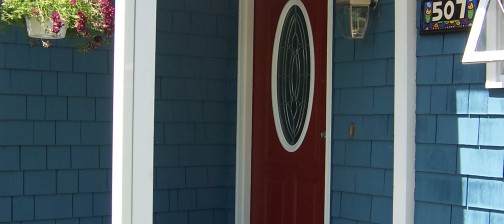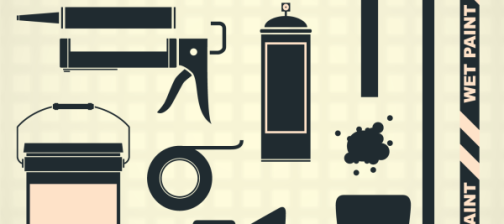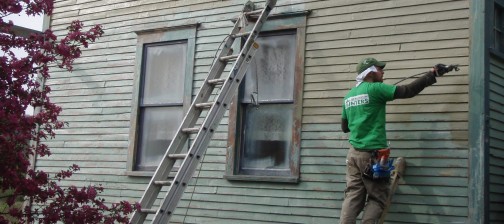Everyone knows that primer is the very foundation of a great paint job. It defines the event horizon; the point where substrate transitions to protective coating, where there’s no going back (like a real event horizon) if the wrong product choices are made, at least until it ultimately fails and you get to start from scratch. Use the right primer, and your paint could last forever; use the wrong primer (or no primer) and your paint could peel within months. Considering this, it is a wonder why people are always asking me “what kind of paint do you use?” yet almost no one ever asks me about what kind of primers we use. Likewise, we see more and more products that claim to be self-priming, and plenty of homeowners and contractors eager to take advantage of this supposed consequence-free shortcut to save time and money. No primer needed, they claim – you get a two coat paintjob for the price of a 1 coat paintjob!
Well, unfortunately there really is no such thing as a free lunch when it comes to primer. For one thing, a good primer is engineered for its purpose – adhesion, penetration, stain blocking, etc. A paint is engineered for its purpose – exterior durability, resistance to moisture, mildew & UV, color retention, structural cohesion, etc. Now, I trust and appreciate the modern engineering and science that goes into the formulation of these “miracle” paint and primer in one products, and although I really don’t think it’s a no-compromise solution, I can accept that they are probably OK primers and maybe even pretty good paints. The problem, however, is that even if you are using one of these dual purpose products as a primer, it is STILL your prime coat (it will soak in to bare wood substrate, flash where it is laid over less porous substrate or previous paint, and generally will behave like a primer), and applying a second coat over this initial coat is just like your first top coat! Since these products are billed as “premium”, and usually also come with a premium price tag, I’d say that it looks like people are just getting fooled into using the world’s most expensive primers on their paintjobs!
The smarter way to do it is to take advantage of the similarly wonderful scientific advancements in actual modern primer technology, and lay down a “first coat” that is really engineered to excel as a base coat. We use highly advanced acrylic-polymer primers for most of our priming work; Products designed to synergize with today’s acrylic topcoats – to penetrate, bond to and seal a wide variety of substrates, build stabilizing cohesive structure, and then molecularly bond to the topcoat creating a total paint system that just works better. The primer is cheaper too – so you aren’t wasting expensive topcoat by using it as primer! So next time you are thinking about taking on an exterior project, and are tempted to skip priming, remember that what you put down first will be the base for any future paintjobs as well – so why not use a dedicated primer, guarantee your long-lasting results, and Paint Smarter.




